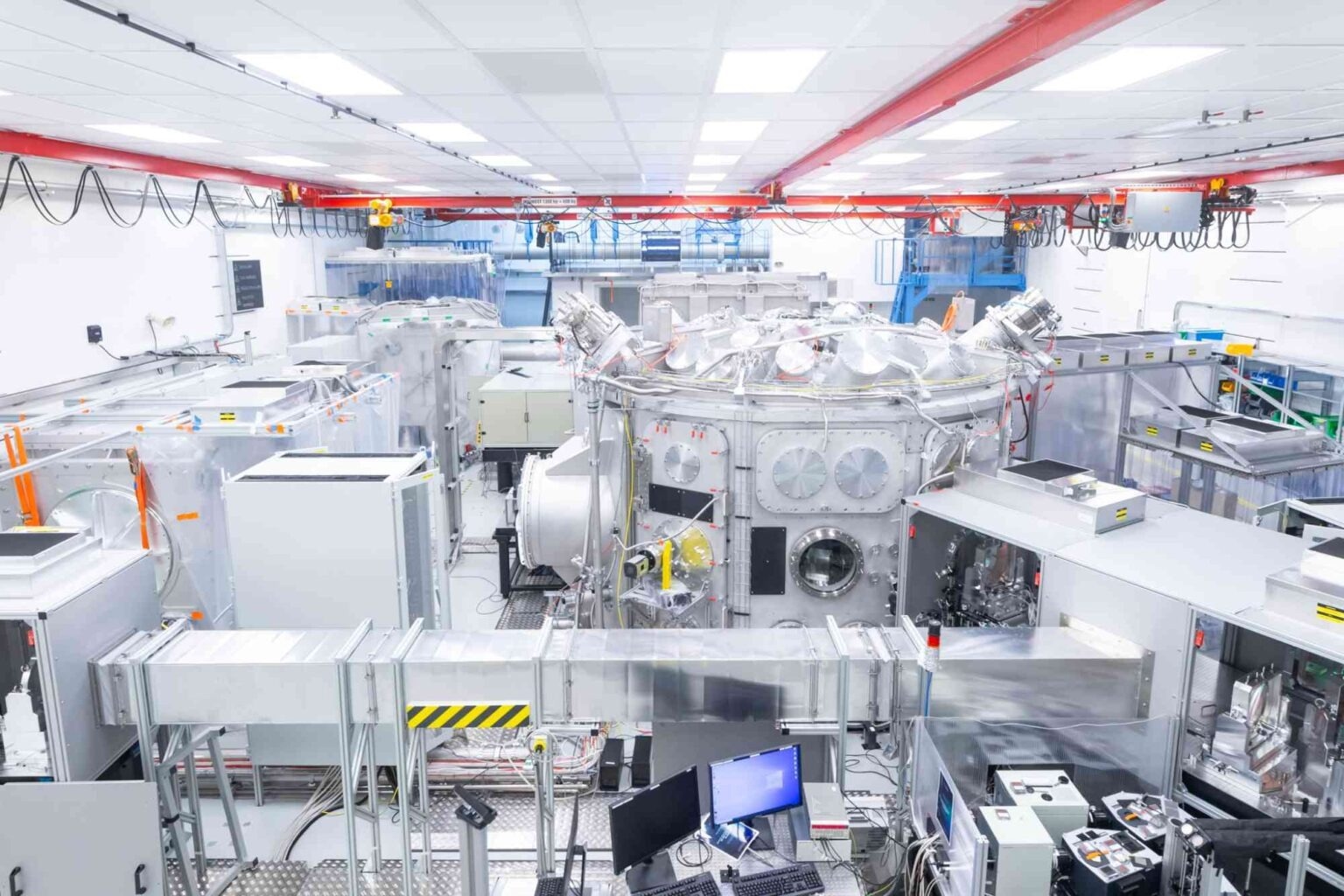Researchers at the University of Rochester are exploring the possibility of generating coherent gamma rays, which could represent a major scientific breakthrough. This advancement would enable scientists to observe and analyze matter in entirely new ways. The project is a collaboration between US and European researchers and may pave the way for the development of a new type of laser.
 GAMMA-RAY GOALS: The experimental hall at ELI Beamlines where the experiments led by University of Rochester scientist Antonino Di Piazza will be performed. If successful, the research could lead to the creation of a gamma-ray-free electron laser, a major goal in the scientific community. Image Credit: ELI Beamlines
GAMMA-RAY GOALS: The experimental hall at ELI Beamlines where the experiments led by University of Rochester scientist Antonino Di Piazza will be performed. If successful, the research could lead to the creation of a gamma-ray-free electron laser, a major goal in the scientific community. Image Credit: ELI Beamlines
Since the invention of the laser in the 1960s, researchers have been striving to develop devices that produce coherent light at progressively smaller wavelengths, enhance image resolution, and explore quantum nuclear states.
Significant advancements in peak power were made with the discovery of chirped pulse amplification by researchers at the University of Rochester in the 1980s, a breakthrough that earned the 2018 Nobel Prize in Physics. However, generating lasers that emit extremely high-energy light, such as gamma rays, has remained a challenge. This difficulty arises because “coherent” light waves synchronize with one another, resulting in a more powerful effect when combined.
Achieving this effect becomes increasingly difficult at higher photon energies. Although lasers have successfully produced coherent light in the visible, ultraviolet, and X-ray regions of the electromagnetic spectrum, generating coherent light in the gamma-ray range remains elusive.
To tackle this challenge, researchers from Rochester have secured funding from the National Science Foundation (NSF) to investigate the coherence characteristics of radiation produced by dense electron bunches interacting with a strong laser field.
Collaborating with colleagues from ELI Beamlines in the Czech Republic, they aim to understand the production of coherent gamma rays and explore potential applications for these novel radiation sources. Such applications could include imaging dense materials, scanning shipping containers, studying nuclear processes, and even creating antimatter.
The ability to make coherent gamma rays would be a scientific revolution in creating new kinds of light sources, similar to how the discovery and development of visible light and x-ray sources changed our fundamental understanding of the atomic world.
Antonino Di Piazza, Professor, Physics, University of Rochester
US–Europe Connections Facilitate Laser Science Advancements
To develop relations between the US and Europe in the field of high-intensity lasers, the project integrates the theoretical expertise of Rochester researchers with the theoretical and experimental skills of ELI Beamlines in the Czech Republic.
The scientists will explore how rapidly moving electrons interact with lasers to generate high-energy light, employing advanced theories and state-of-the-art experiments. Their approach involves initially studying simpler scenarios, where one or two electrons emit light, before progressing to more complex situations involving multiple electrons, with the ultimate goal of creating coherent gamma rays.
This effort builds on the groundwork laid by researchers at institutions like SLAC National Accelerator Laboratory, European XFEL, and SACLA, who have achieved the production of coherent X-rays.
We are not the first scientists who have tried creating gamma rays in this way. But we are doing so using a fully quantum theory quantum electrodynamics which is an advanced approach to addressing this problem.
Antonino Di Piazza, Professor, Physics, University of Rochester
If successful, this project could lead to the creation of a gamma-ray-free electron laser, a major goal in the scientific community, according to Di Piazza.
“Of course, step one is to show that the science is possible before building such a device.”
This research will also support the case for a future NSF OPAL high-power laser user facility at the University of Rochester, a separate NSF-funded project where Di Piazza is a co-principal investigator. If established, this facility could provide a valuable resource for researchers worldwide.
NSF OPAL is part of NSF X-lites, an international network focused on exploring extreme light in terms of intensity, time, and space. The goal of this collaboration is to address key questions in laser-matter interactions at the smallest scales, highest intensities, and fastest times.